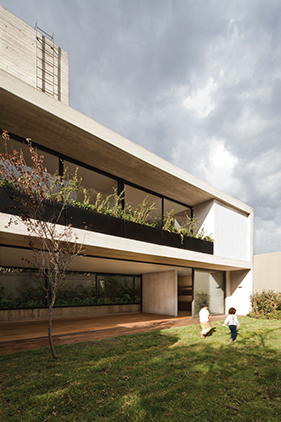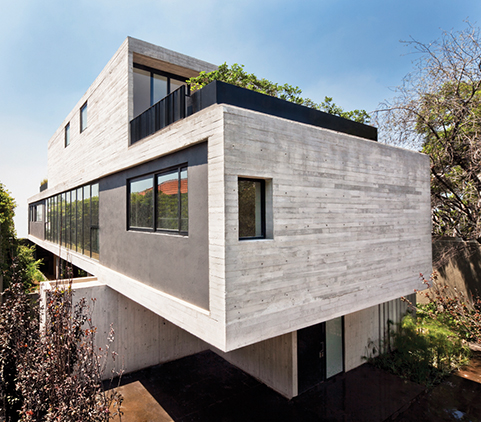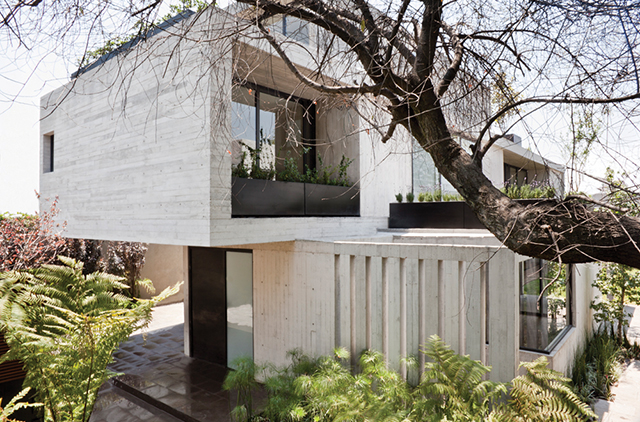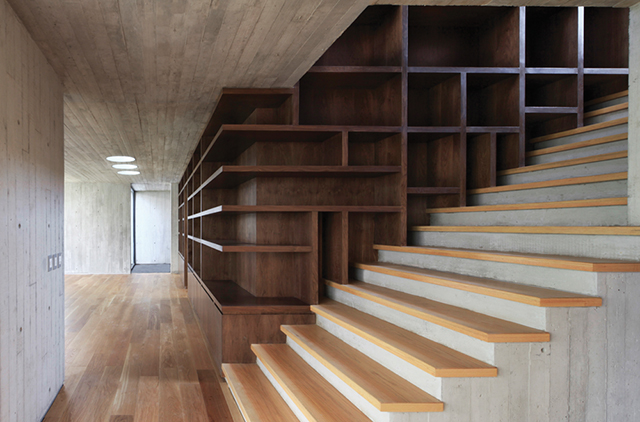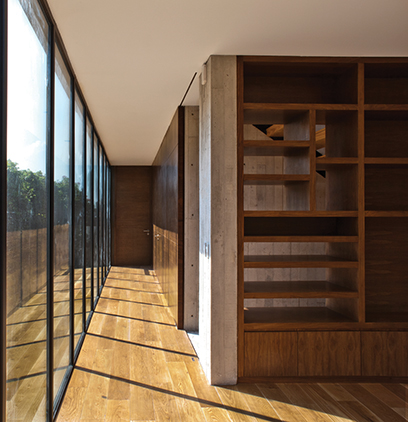Maruma House
author of the text: Fernanda Canales
author of the project: Fernanda Canales Arquitectura
project title: Maruma House
place: Ciudad de México, Mexico D.F.
year: 2010
Located in a residential area of Mexico City, the house becomes an exercise to achieve simultaneously openness and privacy. How is it possible to accomplish spaciousness while surrounded by taller houses on adjacent sites? How is it possible to get spatial flexibility under a program based on divided and isolates spaces? With a system of overlapping boxes – opened and closed - the project takes shape, allowing at times binding some of the boxes into a large fluid space yet, in other cases, leaving the blocks as isolated elements.
By continuing the linear shape of the terrain, the project took shape as an elongated and elevated body sitting over a transparent body which is opened onto the garden on the ground level which, in turn, separates the house from the limits of the site thus emphasizing the independency in relation to the adjacent houses. Another rectangular volume, smaller compared to the others, sits on the second level and continues the play of overlapped boxes, and opens by means of terraces to both of its sides. The house volume is moved slightly to the northern limits of the site in order to generate a garden and greater openings to the South to take advantage of the daylight. On the shortest sides of the sites, the front and the back side of the house are solid faces, while the house opens to both of its long sides.
With the idea to create more open spaces and take advantage of the orientations, the ground plan is designed as the most public space, made up by a rectangular volume, with gardens to both of its sides, allowing a flexible space which can be opened entirely to the exterior. A smaller box –which houses the access, a small living room, the kitchen and a roofed terrace- is introduced into the transparent volume and holds the rest of the house which is flying just above this volume. The service zones are developed in the basement plan trying to free as much site as possible. The body that holds the first level volume takes advantage of the roof which corresponds to the living room to generate a green terrace, which, along with a series of balconies for each bedroom, tries to set apart the most from the neighbour. The first level plan, destined to bedrooms and a family room, is designed as an elongated and transparent body at both of its long faces, interrupted only by three small solid boxes which house bathrooms and dressers.
By alternating the balconies of the bedrooms with these concrete boxes, the play between the opened and the closed is repeated with all the boxes that make up the whole project. The piece that binds all the boxes is a large wooden bookshelf which holds the central staircase and goes all the way from bottom to top of the project. The stairs, designed as one trajectory with the bookshelf on one of its sides, generate a wall-furniture which starts at the access door and goes through the living room until it bends and elevates to the next level turning into a first floor living room furniture and then on a bookshelf at the top of the house.
Downwards, this three-story tall bookshelf unfolds into the basement as a wine cellar, generating a wooden body which on every level has varying openings depending on the usage or program of each space. Towards the street, the house is seen as an anonymous volume. This external solidity is interrupted at the interior with a small patio in the closest area to the main access which connects with a living room and a garden, and is developed all along the terrain. By means of the overlapping of empty and full the house is perceived with bigger spaces allowing the landscape into its interior as well as extending the house outwards.
